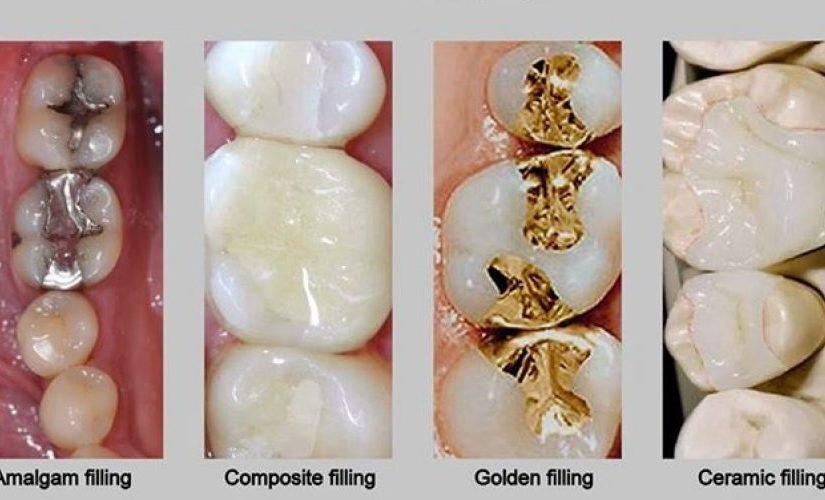
Dental fillings
Dental fillings are a common dental treatment used to repair teeth that have been damaged by decay, fractures, or wear. Fillings restore the structure and function of the tooth, preventing further decay and restoring the tooth’s natural appearance
Procedure:
- Examination and Diagnosis: The first step in getting a dental filling is a thorough examination by your dentist. During this appointment, the dentist will visually inspect the tooth and may take X-rays to assess the extent of the damage and determine the most appropriate treatment.
- Anesthesia: Before starting the filling procedure, the dentist will administer local anesthesia to numb the affected tooth and surrounding area. This ensures that you remain comfortable and pain-free throughout the procedure.
- Removal of Decay: Using a dental drill or laser, the dentist will remove the decayed or damaged portion of the tooth, leaving behind a clean, healthy cavity. The tooth is then thoroughly cleaned and prepared for the filling material.
- Filling Placement: Once the tooth is prepared, the dentist will fill the cavity with a suitable filling material. Common types of dental fillings include:
- Composite Fillings: These tooth-colored fillings are made of a mixture of resin and glass or quartz particles. They blend seamlessly with the natural tooth structure and are suitable for filling small to medium-sized cavities in visible areas of the mouth.
- Amalgam Fillings: Also known as silver fillings, amalgam fillings are made of a combination of metals, including silver, mercury, tin, and copper. They are durable and long-lasting, making them suitable for filling large cavities in back teeth.
- Ceramic Fillings: Ceramic fillings, also called porcelain fillings, are made of a high-strength ceramic material that closely resembles natural tooth enamel. They are highly aesthetic and durable, making them an excellent choice for filling cavities in visible areas of the mouth.
- Glass Ionomer Fillings: These fillings are made of a mixture of glass and acrylic and release fluoride to help prevent further decay. They are often used for filling small cavities in children’s teeth or as temporary fillings.
- Shaping and Polishing: Once the filling material is placed, the dentist will shape and polish it to ensure a comfortable bite and a natural appearance. Any excess filling material is removed, and the filling is smoothed to blend seamlessly with the surrounding tooth structure.
Benefits of Dental Fillings:
- Restoration of Function: Fillings restore the structural integrity of the tooth, allowing you to bite and chew with ease.
- Prevention of Further Decay: By sealing off the cavity, fillings prevent bacteria from entering and causing further decay or infection.
- Aesthetic Improvement: Tooth-colored fillings blend seamlessly with the natural tooth structure, providing a more aesthetic alternative to traditional silver fillings.
- Preservation of Tooth Structure: Fillings require minimal removal of healthy tooth structure, preserving the strength and integrity of the tooth.
Dental fillings are a simple and effective treatment for repairing teeth damaged by decay or trauma. If you suspect you have a cavity or need a filling, consult with your dentist to determine the best course of treatment for your individual needs.



